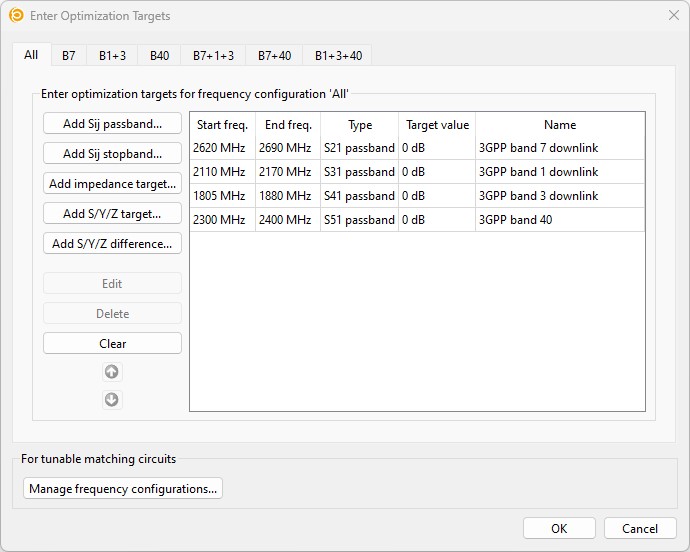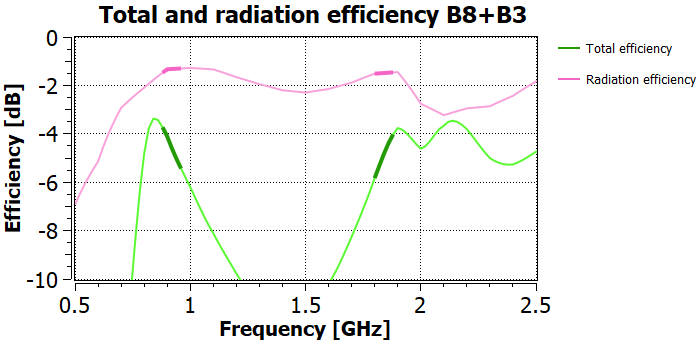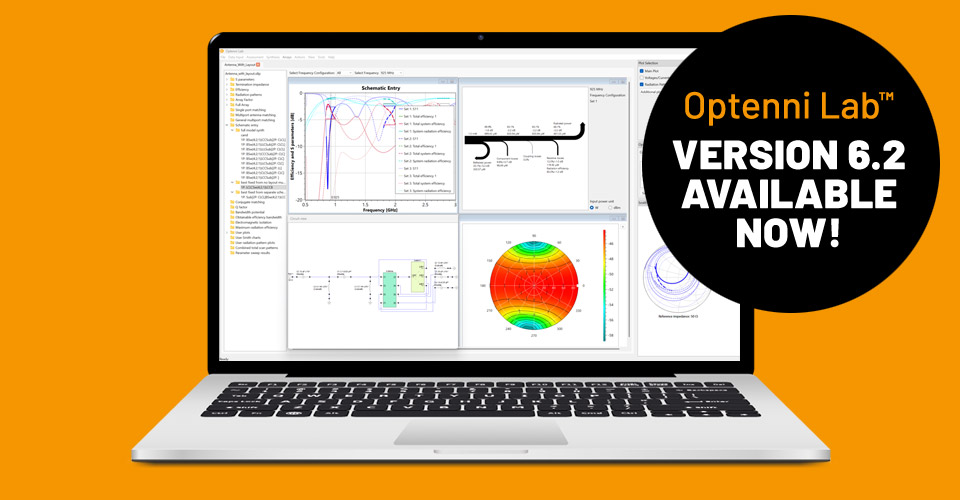Tunable Antenna Design
Optenni Lab is widely applied in the optimization of tunable antennas, which typically are either frequency tunable antennas using aperture tuners or use closed loop tuners which adapt to various user environments. Optenni Lab supports switches, variable capacitor banks and more complex tuner chips as the tunable elements. Optenni Lab can calculate the exact radiation efficiency and radiation patterns of the antenna system as a function of the aperture components.
One of the most advanced applications for Optenni Lab is the design of tunable antennas, frequently encountered in mobile phones and similar applications that dynamically utilize and switch between several frequency bands. The design challenge comes from several factors:
- There are typically fixed parts in the matching circuits that must contribute to good performance at very different frequency ranges. This means that all served frequency band configurations must be optimized simultaneously.
- The radiation efficiency is a strong function of aperture component impedance, and this must be taken into account while optimizing the total efficiency of the system.
- Carrier aggregation modes are commonly used, posing additional complexity in the setup.

For tunable antenna design, Optenni Lab uses multiple frequency configurations. Each frequency configuration has its own optimization targets and corresponds to different states of the switches and tuners of the circuit.
Optenni Lab is uniquely engineered to support this design mode with minimal amount of setup required by the user. The active component may be a switch or a variable capacitor, and multi-throw switch states are also supported. The switch or variable capacitor model is conveniently created with the state S-parameters using our free MDIF file creator utility.
For aperture tuner applications, to properly capture the termination-dependent radiation efficiency, it is enough to perform a full EM simulation of the antenna with the aperture port(s) capturing the portwise radiation patterns, and transfer the design data over to Optenni Lab using the appropriate EM simulator link. Optenni Lab uses the radiation pattern data along with S-parameters of the system to dynamically re-calculate the radiation efficiency when the aperture termination(s) change.
For impedance tuner, Optenni Lab can optimize for fixed components, switch states and variable capacitor values at the input of the antenna, corresponding to the different frequency band combinations required by the system. A hybrid architecture is also supported, combining aperture and impedance tuning technologies.

Aperture tuner example for 4-state Carrier Aggregation

Aperture tuner example for 4-state Carrier Aggregation


